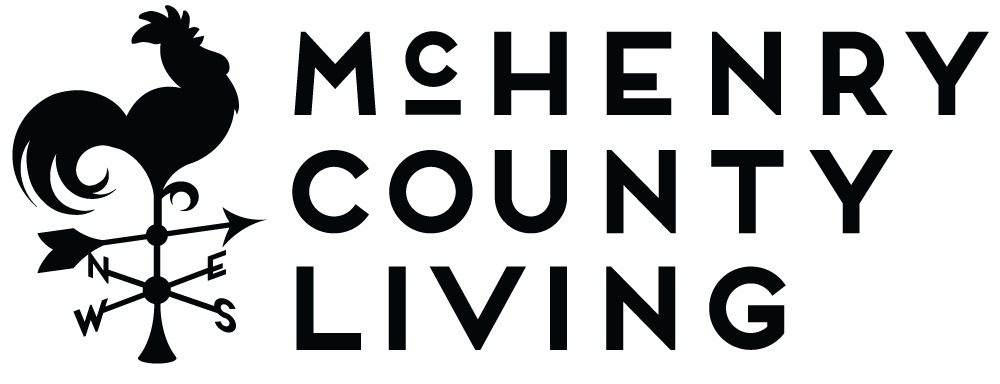The Rose Villa of Pistakee Bay
The Rose Villa has been the most elegant and largest home on the bay for more than 100 years.
On summer days in the early 1900s, Pistakee Bay was alive with seasonal visitors. Sailboats would glide across the bay, their large white sails bulging as the wind moved them across the glistening water. Pistakee Bay was the hub of summer fun for wealthy Chicago businessmen and politicians who stayed at the many resorts located here or built their own, often lavish summer homes along the waterfront.
The most impressive of these summer homes was The Rose Villa, a three-story mansion that stood on the shore of Pistakee Bay. Completed in 1912, the house was constructed of white McHenry artificial stone with 32 rooms, eight fireplaces, eight bathrooms and a ballroom space on the third floor. It was the home of Chicago businessman George Sayer and his wife Rose. Sayer, the wealthiest man living on the bay, owned a butcher supply business and a chemical company.
Sayer had extensive waterfront property that was known for the massive rose garden, Rose’s favorite flower, and an animal preserve, Deer Park, on the grounds. His exotic animals, especially birds, were often shipped to McHenry by train then transported by boat to the bay as there were no access roads at the time. According to the Sayer family’s history, the animal park also contained two sacred cattle from India. Sayer’s holdings also included five farms that employed many local people.
MOB TIES
After the death of George in 1926, his widow, Rose, returned to her family in Wisconsin and sold the properties to William “Billy” Skidmore of Chicago. Skidmore was well connected with the Chicago mob and was said to be a “bondsman” for Chicago’s West Side in charge of gambling, prostitution, bootleg liquor and politicians paying for favors, and was also the proprietor of a salvage business on the city’s South Side.
The farms under Skidmore were modernized and raised high-quality horses, including Percherons and Suffolk draft horses, again providing employment to local residents just as Sayer had done.
In 1934, Skidmore had two wings of the house removed at his wife, Ethel’s, request, but being a practical man, he used the stone to build a gatehouse with an apartment above it and had a greenhouse built by Chicago-based Foley Greenhouse Manufacturing Co. In later years, the greenhouse was dismantled by a subsequent owner and then rebuilt by Foley. Today, it continues to provide flowers for the estate.
Barbara Smith, a descendant of the Skidmores, recalls her mother telling of visits to Pistakee where they would stay, probably at one of the farms, and then be taken over to the Rose Villa by cart to visit Aunt Ethel.
TRANSITION PERIOD
In 1941, Skidmore was convicted of tax evasion and sent to prison where he died supposedly of a heart attack, in 1944, shortly before his release.
Fran Larsen recalls renting the apartment over the carriage house in the 1950s when first married. “I remember the lilacs more than the roses,” she said. “They ranged from the very lightest to the darkest in color and the fragrance permeated the whole area.”
The house underwent several owners and was often neglected. In the 1960s, Walter Gehlaar, a pilot, purchased it and made the repairs necessary to make it livable for his family.
BACK TO ITS FORMER GLORY
In 1984, its current owners, Catherine and Robert, purchased it. Robert had been a boater on Pistakee Lake and had admired the home for many years. In 2006 after much research, they began massive restoration of the house and the gardens.
The beautiful winding staircase was refinished to look as it did in the early 1900s. The handrail was carefully dismantled, stripped of all paint, refinished and carefully replaced. “Each rail was a different size and had to be catalogued for reassembly,” the owners said. “All the interior doors and hinges were removed and carefully labeled as each hinge had worn differently over the years. The hinges and any relevant hardware were replated to look as they had in the 1900s.”
Heaped in a corner to be discarded, the owners found a beautiful canvas that had been hand-painted with a dark red background and tiny yellow roses. It had covered a wall in the sunroom. They decided to repair, and reinstall the wall covering, and with the work of several artisans over many months, the painting was restored.
Today the home looks much as it did in the early days. The elegant dining room that opens onto the veranda facing the bay is often the setting for formal holiday dinners or family parties, allowing in the outdoors and the view of the bay.
A CENTURY OF BEAUTY
If you were cruising along the bay on a beautiful summer night last August, you would have heard the strains of a live string quartet coming from the Rose Villa as a lawn party, reminiscent of parties in days of old, celebrated the 100-year anniversary of the house.
Games of croquet and badminton were held on the lawn just as they would have been in the 1900s. Food served reflected the choices popular each decade of the home’s existence. The guest list included descendants of both the Sayer and Skidmore families, and a previous owner of the mansion. And just as they had in the early days, some visitors arrived by boat, although they tended to be motor driven rather than the sailboats of old.
According to the owners, “This is a great home and is shared with family and close friends. We feel we are just the caretakers of the legacy of the Rose Villa for the next generation.”

